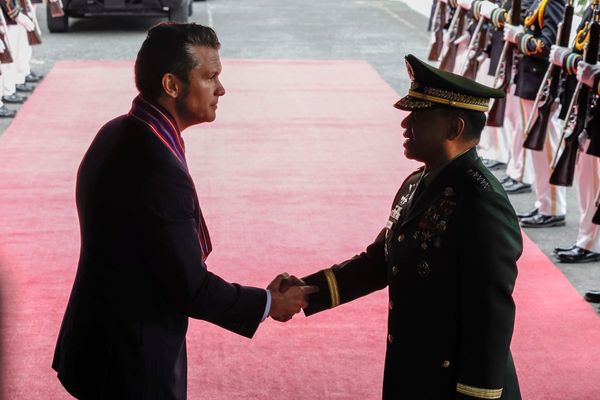On October 12, 1976, an Indian Airlines Caravelle flight from Bombay to Madras (IC 171) crashed shortly after take-off at Bombay and while attempting an emergency landing, killing all 95 passengers on board. An engine had caught fire. Among the last words of Captain K.D. Gupta, the commander, picked up by the cockpit voice recorder was that he “was feeling sleepy”. He had done the early morning Boeing departure to Delhi and back, spent the whole day in office and opted to operate the delayed Caravelle flight. The ill-fated plane was to operate the flight after the authorities “had made two earlier futile attempts to fly the passengers to Madras” on a Boeing flight. One of the Boeings had had a bird hit and the other had a snag. Passengers were also discontented.
Some of the operating procedures on the Caravelle were different from those on a Boeing, which was highlighted in the court inquiry. Following the crash, one of the quick regulator actions was to stop pilots operating two types of aircraft. The pilots on the Caravelle flight, Captain Gupta and co-pilot Captain K.L. Pershad/Prasad, had endorsements on their licences to fly the Boeing and the Caravelle.
Recent crew incidents
In the past weeks, there have been reports of some Indian pilots who passed away due to cardiac arrest. One of them was a pilot of Indian origin flying for an airline in West Asia. Another was a pilot employed in a major private airline in India who collapsed and died at the boarding gate in Nagpur just before his flight. The third incident involved a pilot on a Latin American airline flight from Miami to Santiago, Chile, who collapsed on the flight and where the co-pilot had to land the aircraft. Ten years ago, another Indian pilot passed away as he stepped out of a simulator after training pilots.
Do airline managements and the aviation regulator in India understand the importance of fatigue and sleep deprivation? Are profits and passenger numbers the only important factor in the airline business? Did not the loss of over 150 lives in the Air India Express crash (IX 812) at Mangaluru in May 2010 stir the conscience of all those involved? The Supreme Court of India, the Ministry of Civil Aviation (MoCA), the Directorate General of Civil Aviation (DGCA) and airlines? India has one of the worst sets of rules on Flight and Duty Time Limitations and rest periods. The people who drafted and implemented these rules have no clue about the risks involved. India’s DGCA and airlines would do well to read through and understand the chapter, “Pilot fatigue and the regulation of airline schedules in post-war Britain” in the publication, Balancing the Self.
On fatigue and stress
In the examples given, only one involved death in the cockpit on a passenger flight. Fortunately, the copilot was experienced and well trained to take over and bring the aircraft to a safe landing. The death of the pilot in Nagpur, just before commencing a multi-sector flight, should be a wake-up call. There are many questions to be answered. One of them is the experience level and also the competence of the copilot if there is a serious issue involving the crew during flight.
Airlines will claim that all their pilots are well trained and meet the minimum standards. Having been a pilot for over 40 years, I have observed how proficiency checks are manipulated and where training is a mere ‘box-ticking exercise’. If one adds to this deficiencies highlighted in the International Civil Aviation Organization’s Annex 14 Volume I “Standards for Runways and airfields”, we are living in a dangerous situation. Airlines the world over have a minimum total cockpit time experience for both pilots put together, with specific hours for narrowbody aircraft and widebody aircraft, respectively. Can the DGCA and airlines in India meet these numbers?
I would like to highlight a phrase used by Real Levasseur, the lead Investigator of the Air France (AF358) overrun incident at Toronto airport, Canada, in August 2005. He said, “Humans and Humans. They are not machines.” When are the MoCA, the DGCA and airlines going to wake up to that wisdom? Duty time for crew is not a ‘one size fits all’ matter. The fatigue level of a human differs at different times of the day and the circadian low comes into play in the hours that fall from midnight to sunrise. The number of landings a pilot performs during his duty period adds to the fatigue level.
More than 60 years ago, a scientific study proved that the stress level during an approach to land, especially in adverse weather conditions, can raise the heart level to more than 240 beats per minute. The adrenal glands kick in and a body faces severe sugar depletion. Analysis of accidents involving highly experienced crew identified this as a cause. Sleep deprivation and a micro-sleep condition for between five to 15 seconds during the approach and landing phase have also been identified as a cause for accidents. The subject is an urgent matter to be addressed before precious lives are lost.
A different category of staff
Pilots are not in the same work category as airline ground staff, including management staff. Those on ground can avail two days off every week for 52 weeks (a year) in addition to public holidays and annual leave. Flying crew in India on the other hand, get one day off in a week and just their annual leave. ‘Safe airlines’ worldwide provide at least two days off every week and proper rest periods between flights for the body clock to unwind. DGCA regulations lay down the absolute minimum. Nothing prevents an airline from providing more rest days if their interest in safety and the human factor of the flight crew is to be addressed.
The fatal accident at Mangaluru and Kozhikode (August 2020) had identified another important factor. The pilots were taking medications. This is not confined to a few. With a kind of rostering where crew do not have sufficient time at home but are away from it for six days a week, self-medication becomes a norm. Without many being aware of side-effects, these can induce other conditions.
Having inquiries without implementing their findings will not save lives. The sooner the system in India understands this the better it will be for safety.
Captain A. (Mohan) Ranganathan is a former airline instructor pilot and aviation safety adviser. He is also a former member of the Civil Aviation Safety Advisory Council (CASAC), India







